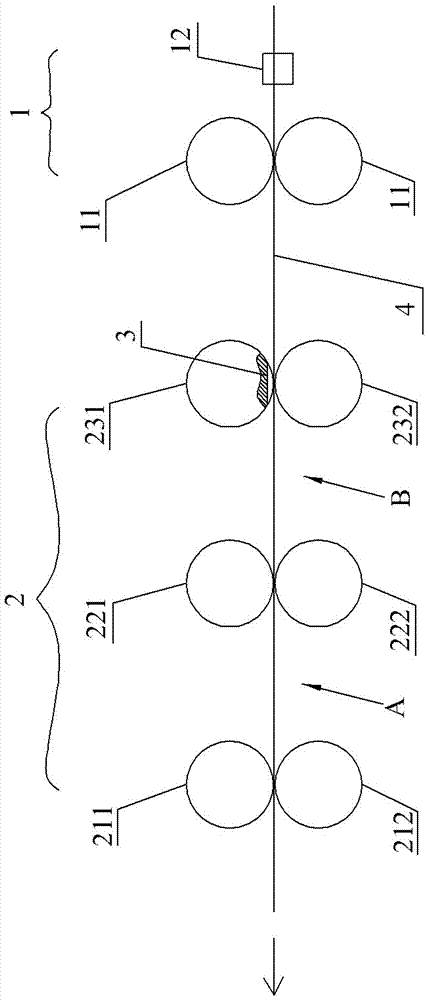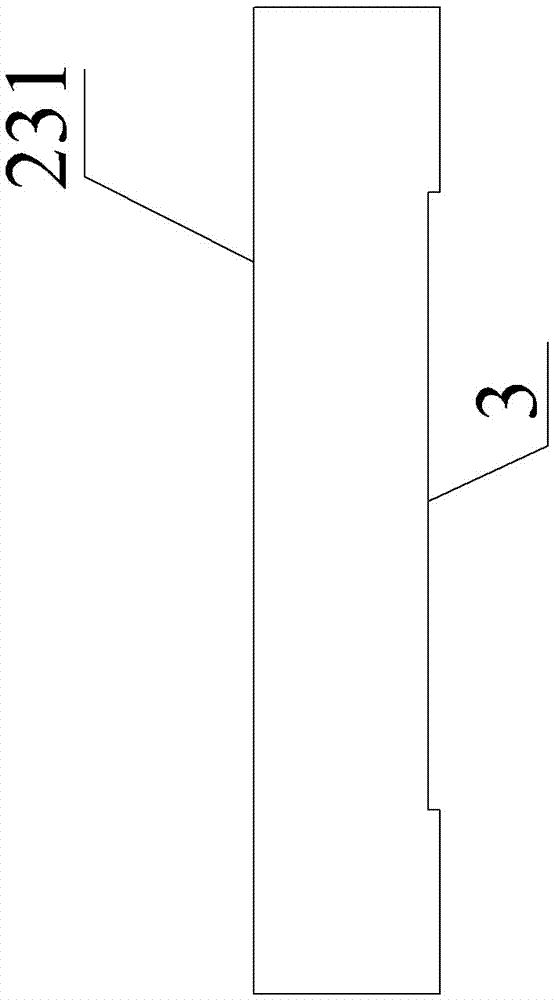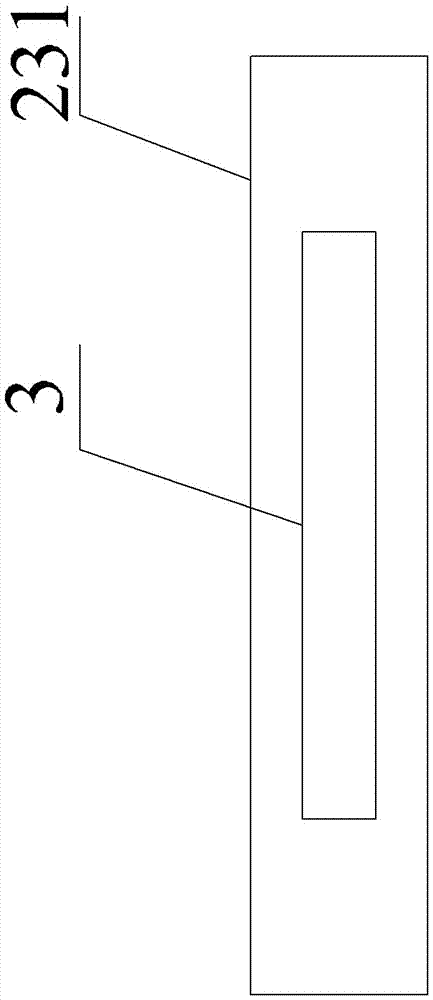Polylactic acid colorful long bunchy yarn, drawing device for processing same and processing method
A processing method and technology of polylactic acid, applied in the direction of yarn, spinning machine, textile and paper making, etc., can solve the problems of easy hardening color fastness of yarn and high production cost, and achieve various styles, low processing cost, and high quality yarn The effect of stable performance
- Summary
- Abstract
- Description
- Claims
- Application Information
AI Technical Summary
Problems solved by technology
Method used
Image
Examples
Embodiment 1
[0035] Step 1, raw material preparation, using the conventional dope coloring process to prepare 4 colors of polylactic acid colored staple fibers, namely white, red, yellow and black;
[0036] Step 2, clearing, respectively pass the polylactic acid colored short fibers of various colors through the cotton opening machine to make cotton laps of a certain size, and the dry basis weight of the cotton laps is 380 g / m;
[0037] Step 3, carding, carding the cotton rolls of various colors to make slivers of various colors, the dry weight of the carding sliver is controlled at 20 g / 5m;
[0038] Step 4, head drawing, the raw strips of various colors are passed through the head and made into pre-drawing, and the dry weight of the pre-drawing is controlled at 19 g / 5m;
[0039] Step 5, at the end, draw 2 red, 2 white, 2 black, and 2 yellow Figure 4 As shown, the slivers of different colors are fed into the cotton feeding roller 11 in parallel at the same time, and the slivers of differ...
Embodiment 2
[0045] Step 1, raw material preparation, using the conventional dope coloring process to prepare polylactic acid colored staple fibers in three colors, namely red, blue, and pink, and then prepare white tencel fibers;
[0046] Step 2, cleaning, respectively pass the colored polylactic acid staple fibers and tencel fibers of various colors through the cleaning opener to make cotton laps of a certain size, and the dry basis weight of the cotton laps is 365 g / m;
[0047] Step 3, carding, carding the cotton laps of various colors to make slivers of various colors, the dry weight of the carding sliver is controlled at 19 g / 5m;
[0048] Step 4, head drawing, the raw strips of various colors are passed through the head and made into pre-drawing frames, and the dry weight of the pre-drawing frames is controlled at 17.5 g / 5m;
[0049] Step 5, at the end, draw 2 red bars, 2 blue bars, 2 pink bars, and 2 white bars Figure 4 As shown, the slivers of different colors are fed into the cot...
Embodiment 3
[0055] Step 1, raw material preparation, using the conventional dope coloring process to prepare polylactic acid colored staple fibers of two colors, namely red and black, and then prepare white polyester fibers;
[0056] Step 2, cleaning, the fibers of various colors are respectively passed through the cleaning and opening machine to make cotton laps of a certain size, and the dry basis weight of the cotton laps is 380 g / m;
[0057] Step 3, carding, carding the cotton rolls of various colors to make slivers of various colors, the dry weight of the carding sliver is controlled at 20 g / 5m;
[0058] Step 4, head drawing, the raw strips of various colors are passed through the head and made into pre-drawing frames, and the dry weight of the pre-drawing frames is controlled at 18.3 g / 5m;
[0059] Step 5, final merging, feed 2 red slivers, 2 black slivers, and 2 white slivers in parallel to the feeding roller at the same time, separate slivers of different colors by a slitter, and ...
PUM
 Login to View More
Login to View More Abstract
Description
Claims
Application Information
 Login to View More
Login to View More - R&D
- Intellectual Property
- Life Sciences
- Materials
- Tech Scout
- Unparalleled Data Quality
- Higher Quality Content
- 60% Fewer Hallucinations
Browse by: Latest US Patents, China's latest patents, Technical Efficacy Thesaurus, Application Domain, Technology Topic, Popular Technical Reports.
© 2025 PatSnap. All rights reserved.Legal|Privacy policy|Modern Slavery Act Transparency Statement|Sitemap|About US| Contact US: help@patsnap.com



